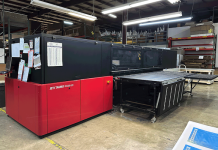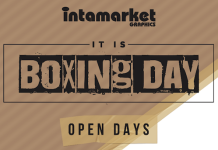According to Gerber Technology, while it would be easy to bypass some trends in signage, in order to be competitive, it is important that even the smallest trends are not overlooked.
In recent years, technology has advanced at lightning speed, which has necessitated the overhaul of a number of industries, including the commercial printing industry. This industry niche is cross-cutting, and those providing signage and graphics are likely to experience the same technological evolutions as companies try to position themselves strategically in order to maximise revenue.
While technology advances are driving many of these changes, other influences such as customer demand, increased use of personalisation, digitisation and 3D, as well as an orientation towards being more service-oriented, are all driving the industry to be innovative and cutting edge.
Important to recognise in the industry’s overall rapid growth:
– Printed packaging is expected to be 68% (up from 64%), and exceed $812 billion by the end of the year.
– The average yearly growth has been at 8% annually, and 95% of businesses are expecting expansion over the next 12 months.
– Only 18% of companies are entirely analogue, and 65.4% are now offering graphic design services, with 64.9% also offering POP/display advertising.
– Furthermore, the competition is particularly stiff in this industry, with 72.2% of companies having been in business for over twenty years, meaning that they are well-established and have a deep customer base.
Ultimately, companies in this industry are well-established, and poised to expand rapidly if they can capitalise on the right trends at the right opportunity.
1. The need to pivot PPE production
This past year has highlighted the ability of the graphics and signage industry to quickly pivot with the dramatic changes brought on by Covid-19. Some companies recognised the need early on for PPE, and realised they were in a position to transition their production lines to help, since the equipment and processing structures were very similar. This enabled many to be able to make sneeze guards, social distancing signs and other equipment for hospitals and businesses in need and decrease the burden on the PPE supply chain at the time. Furthermore, it helped communities recognise the utility of these companies, create more customers and form another revenue stream for businesses. By being agile and innovative, the industry was able to make lemonade from lemons, and keep business going despite very challenging times.
2. Personalisation is a must-have
Another avenue to pursue in the near future could be to address the increased demands of customers for personalisation. While many printing services are already inherently personal, many businesses have taken to offering more personal approaches to the way they deliver their product — such as individualised design and layout services. The drawback to this approach is that it can eat up more time (and potentially expense), but the payoff comes from improved and deepened relationships, as well as long-term loyalty. Another way to provide personalised services is to improve digitisation technologies, which allow the customer to scan, store and access their documents with ease. This is typically an easier modification to services that can be made, and pays off in dividends with the customer.
3. Customers prioritise convenience
Improve customer retention, such as by offering printing on-the-go services. This is a technological innovation that allows customers to order prints from their smartphones, and can greatly improve customer satisfaction and overall experience. This takes advantage of the Internet of Things (IoT), which can help by connecting products together to facilitate ease-of-use. The downside of course being that it can involve significant investments to upgrade and improve a company’s technology, but oftentimes it will pay off in dividends.
4. Minimalism is in
Other customer trends include a focus on minimalism, which means companies will need to ensure that they avoid complex and extensive designs for their customers. Sustainability is important to customers. With this generation often driven by social issues, launching eco-friendly initiatives is increasingly important. And research shows that the details of environmental initiatives might be less important. Companies who are not including this as a consideration will be the ones that many consumers will avoid, in lieu of doing business with companies that are at least demonstrating some level of commitment to better sustainability practices.
Ultimately, it comes down to adapting practices wherever possible to provide more personalised services that meet the immediate needs of the customer. Improving technology so that customers can connect to printing services, have more control over the personalisation of products and designs, as well as by providing 3D printing and adjusting design practices towards minimalism, will all contribute to an improved customer experience. This coupled with an eye towards sustainability can help position companies in this space towards the front, and stay ahead of the technological innovation curve that is critical within this space.
GERBER TECHNOLOGY
https://www.gerbertechnology.com/















